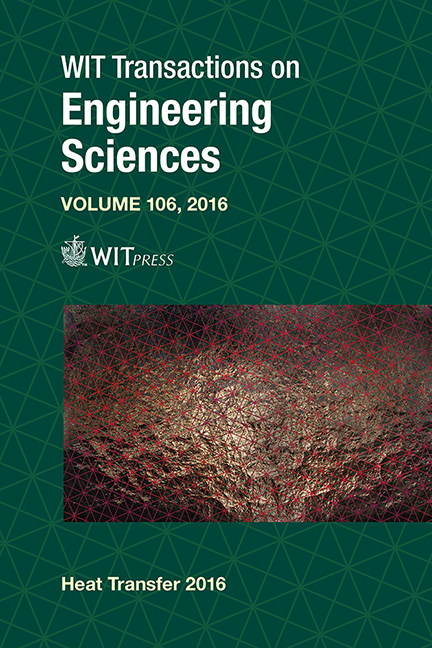Thermal Networks From The Heat Equation By Using The Finite Element Method
Price
Free (open access)
Transaction
Volume
106
Pages
11
Page Range
33 - 43
Published
2016
Size
502 kb
Paper DOI
10.2495/HT160041
Copyright
WIT Press
Author(s)
I. Naveros, C. Ghiaus, J. Ordoñez, D. P. Ruíz
Abstract
The classical heat equation is a partial differential equation (PDE) which is utilized for describing heat conduction in solids considering continuous media; the heat equation is stated taking into account the principle of energy conservation and Fourier’s law. Thermal networks are usually used for studying heat transfer processes by considering a thermal-electrical analogy, as it is noted by Carslaw and Jaeger, despite the fact that well-known discrepancies between heat and electricity exist. On the other hand, numerical prediction of thermal problems using finite elements has been developed significantly and numerical codes like ANSYS fluent or COMSOL are widely used to solve heat conduction in combination with fluid mechanical problems. The aim of this paper is to show that thermal networks may be deduced from the heat equation without the thermal-electrical analogy by using finite elements. For this purpose, the heat equation is put in its weak form and, by using the finite element method as introduced by Gilbert Strang, the weak form of the heat equation is expressed as a system of differential and algebraic equations (DAE), i.e. as a thermal network.
Keywords
heat equation, thermal networks, finite elements, model transformations





